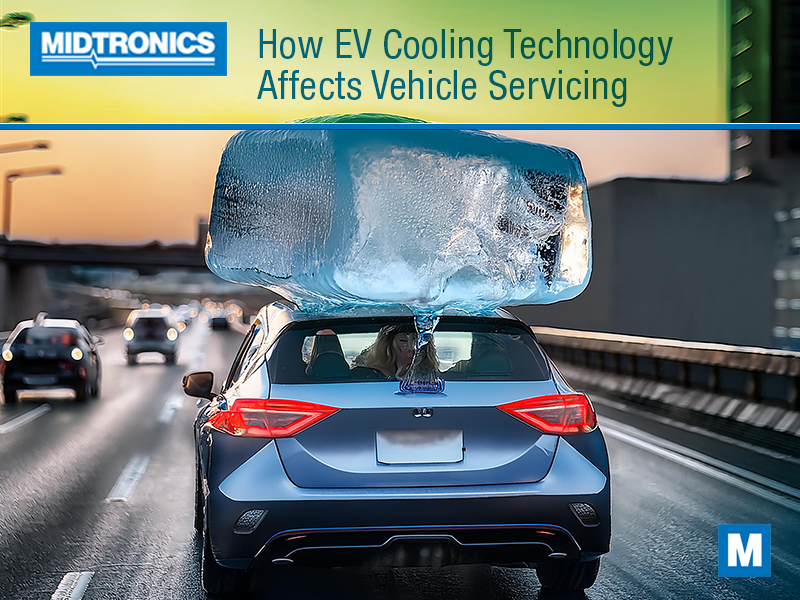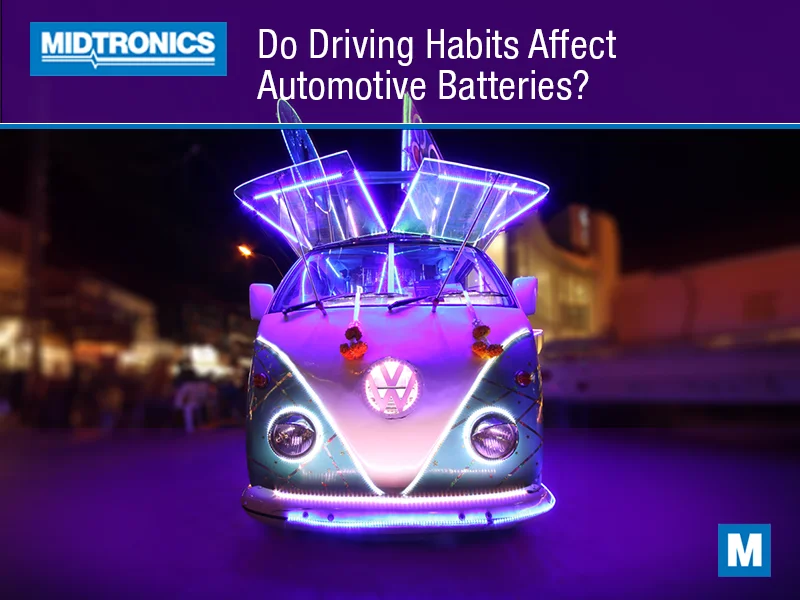A car’s reserve power source, the battery, is designed to be hardy and capable of withstanding harsh environmental conditions like humidity and extreme temperatures. But it can only take so much, and anything outside of normal operating conditions can begin to compromise its ability to recharge quickly and completely.
Many car owners – and some auto techs too – believe that when they’ve encountered a problem with their car’s electrical system and they fix it, the battery will work normally again. That may be true sometimes, but certainly not always. Often, it depends on how long a problem has been going on and how much strain it’s put on the battery over that time.
These are six relatively common problems that can not only contribute to a battery discharging but require a battery replacement earlier than you’d expect.
Corrosion on the Battery or Terminals
A natural by-product of a car battery’s operation is a small amount of corrosion that forms on the terminals. Corrosion can form on battery terminals due to a chemical reaction that occurs between the lead battery terminal and the sulfuric acid present in the battery. It forms a white or bluish-green powdery substance that can create a resistance between the battery and the connection point, reducing the amount of current that can flow to or from the battery. It takes longer to recharge as a result.
However, when the corrosion is abundant and spans the two terminals, it can actually cause a mild constant drain, even when the ignition is off. The longer it’s left, the tougher the toll on the battery’s health, even though it takes days to drain the battery.
Bad Ignition Switch
An ignition switch is essentially a disconnect that shuts off power for accessories and starting, depending on the ignition’s position. If the electrical contacts inside get damaged or corroded, it may not properly disconnect when the key is turned off, and systems like fuel injection, control modules, and internal circuits may stay powered up. Or, on the other hand, it can prevent the alternator from recharging the battery in rare circumstances.
Faulty Starter Motor
A starter motor that draws too much power can quickly kill a battery as it cranks. It’s a relatively common concern for aging vehicles, and it’s because the starter motor decreases in the torque it can produce as it wears but still commands the same amount of current from the battery. Repeated attempts to start the engine exacerbate the problem.
Also, if the starter solenoid has a short, there could be a constant drain on the battery whether the engine is running or not.
Alternator Fault
A more direct problem that can kill a battery is a bad alternator, for an obvious reason: it’s responsible for recharging the battery. A few problems can cause the battery to fail including:
- Decreased output from wear and tear that’s insufficient to charge the battery
- A faulty regulator that allows the alternator to overcharge the battery
- A short circuit that drains the battery rather than charging it
Even a problem like a belt that isn’t tensioned properly can cause the battery to recharge at a slower rate than normal. When it’s stored with a low charge, sulfation can crystallize on the plates inside the battery, reducing its operating capacity and ability to recharge in the future.
Faulty Door Switch
Such a seemingly minor component can cause massive headaches. A door switch is normally meant to trigger the dome light when the door is opened, but it’s also used to awaken modules that have gone to sleep after the vehicle has been parked for some time. The switch is simple in design, so it’s never thought to be the cause of any other problems.
However, a short in the door switch might not trigger the dome light to come on – which would be an obvious giveaway. It can prevent the modules from going to sleep, essentially creating a parasitic drain on the battery all the time.
Improperly Installed Electronics
It’s common for car owners to install aftermarket accessories in their vehicles. It ranges from remote engine starters and anti-theft devices to alarms, backup cameras, and bass-pounding car stereos. When these systems are wired in, the connections need to be secure to prevent a parasitic drain or short circuit. Unfortunately, installation doesn’t always follow the proper procedures, and what seems like a phantom problem with the charging system or battery is actually caused by the aftermarket installation.
Even when electronics are installed properly, the aftermarket modules they contain can fail internally. Because it’s not part of the vehicle’s original electrical system, it makes it difficult to diagnose and trace to its source.
Accurate Diagnostics are Crucial
When a vehicle has a dead battery, the first step is to recharge and test its condition. But for many of these concerns, the battery is likely to check out as normal if only a basic battery test is performed. It leaves the door open to repeated and aggravating problems in the near future, even if the battery is replaced.
When a vehicle owner has electrical concerns or any complaints that result in a dead battery, it’s a good plan to perform tests that go beyond conductance alone. Conductance profiling and can indicate when there’s ‘noise’ on the electrical system that shouldn’t be present, along with a more thorough charging system and starting system check.
Not all electrical issues are straightforward, even when they appear to be on the surface. By equipping your shop with equipment capable of making complex or evasive problems easier to diagnose, you can not only save time on the repair but save face with the customer and help retain their long-term business.




